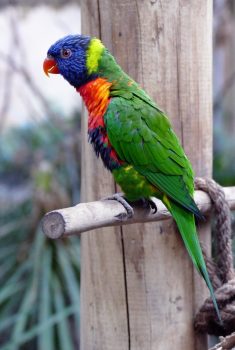Can A Pollybeak Be Fixed?
 Nicknames for cosmetic surgery target areas can actually be handy for both patients and surgeons. They can shorten up a complicated medical term and make it easy for people to remember and talk about. It’s a good bet that most patients would not be likely tell their surgeon they suffer from gluteal crease or infra-scapular fat, but would be able to point out their “banana rolls” or “bra rolls.”
Nicknames for cosmetic surgery target areas can actually be handy for both patients and surgeons. They can shorten up a complicated medical term and make it easy for people to remember and talk about. It’s a good bet that most patients would not be likely tell their surgeon they suffer from gluteal crease or infra-scapular fat, but would be able to point out their “banana rolls” or “bra rolls.”
“Pollybeak” is a nickname given to the appearance of certain noses—most of them are post-op outcomes that prompt a patient to consider rhinoplasty revision. In New York in our practice, we treat several of these cases each year.
What is a Pollybeak?
A pollybeak, often called a “supratip deformity” by those in medicine, is a nose that has an excessively droopy tip. This means as the nose descends from the bridge, the tip dives downward unnaturally and creates a nose appearance that’s short and rounded, perhaps a bit plump—like a parrot’s beak. You can see some examples here.
Do You Have a Pollybeak?
If you have had a nose job that ended up in a pollybeak, we sympathize! And we want you to know that your results can probably be improved. The second surgery will be challenging, however. We welcome you to come see us, or search for another board certified plastic surgery practice with many years of successful revision rhinoplasty experience to offer.
Why Does it Occur?
Occasionally we’ll see a patient—often of non-Caucasian heritage—with a native nose with a supratip deformity in our practice in New York. Revision rhinoplasty candidates with a pollybeak are more common, though. Why is that?
As we’ve said many times, nose surgery is a procedure in which millimeters make the difference. We enjoy this type of cosmetic surgery so thoroughly because of this challenge, and because it allows us to use our years of experience, artistic sense and delicate approach. Plastic surgeons with less experience sometimes cause pollybeak outcomes by making small errors such as reducing the dorsum (bridge) of the nose too aggressively or under projecting the tip of the nose and/or leaving it without proper support.
To be fair, if your surgery was within the last few weeks or months, the droopy, pudgy look of the tip of your nose may be simply due to persistent swelling that will pass. It may also relate to excess scar tissue formation, a result that’s probably not your plastic surgeon’s fault.
Are Pollybeak Deformities Common?
Most sources agree that the rate of patients seeking rhinoplasty do-overs range from about 5 – 15% depending on the type of initial procedure. That means that between about 5,000 and 6,000 men and women seek rhinoplasty revision in the U.S. each year (drawing from The Aesthetic Society’s statistics).
The precise number of rhinoplasty revision procedures involving a pollybeak is unknown, but a few authorities can help us estimate. In 2007, a German ENT physician wrote:
The pollybeak is the indication in about 50% of all revision rhinoplasties.
A team of Korean doctors published a paper in 2012 asserting that:
A pollybeak is one of the most common deformities after primary rhinoplasty; most studies suggest that the condition occurs in 40% to 64% of cases for which secondary rhinoplasty was performed.
Indeed, then, post-surgery supratip deformities are not uncommon. A conservative estimate based on these numbers would suggest 2,500 – 3,000 U.S. patients consider a nose job do-over for this reason each year.
How Do You Revise a Pollybeak?
If you elect to visit us in New York for revision rhinoplasty to address a pollybeak, our strategy will depend on the underlying cause. We will perform a detailed exam to determine what’s going on. If the culprit is scarring, we may elect to try steroid injections to calm the tissue.
If the problem is more structural, it’s likely that cartilage grafts would be necessary. These may come from inside the nose, your ears or ribs.
As you might guess, the surgical plan we create would be fine-tuned to your unique situation, and we may need to make some decisions while you’re under sedation. Our consultation appointment is key to success! Please come prepared with photos of your nose before and after your initial surgery, if at all possible, plus surgical notes and any other pertinent material you may have. Bring a list of questions, and a friend to help you remember all the details if you wish.
We look forward to meeting you! Call us at 212-570-6080 to get the process in motion.
Proposed photo: Photo by Anthony from Pexels